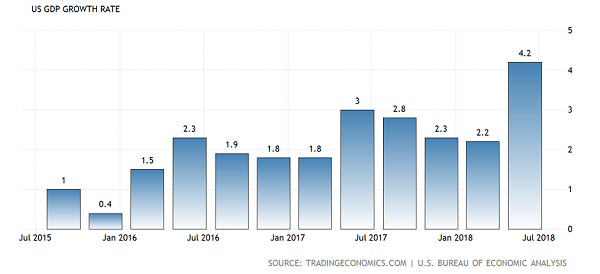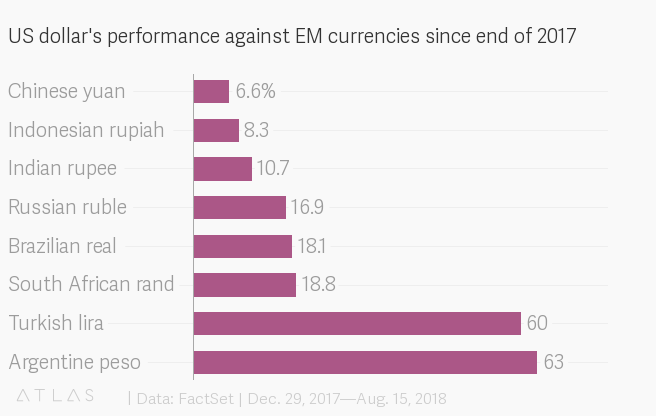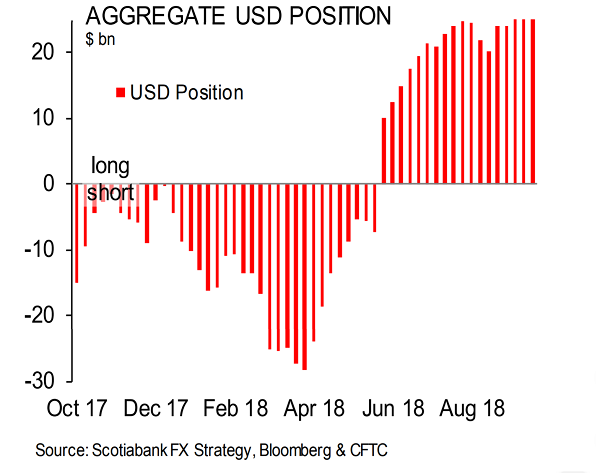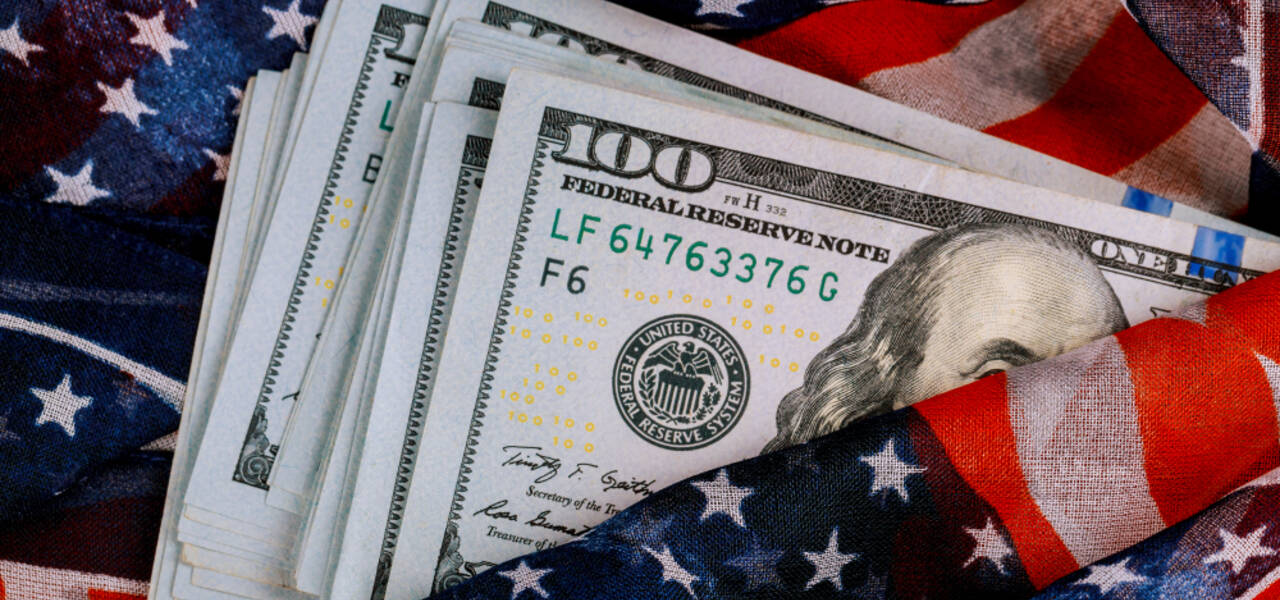The US dollar index is trading near the 2018 highs. Why did it happen and what big moves of the USD lie ahead?
The greenback's power base
There are several factors that helped the USD appreciate.
Firstly, Donald Trump's tax cuts propelled American economic growth to a robust annual rate of 4.2% in the second quarter.

Secondly, the US Federal Reserve is ahead of other central banks in policy tightening. The minutes of the FOMC September meeting released last Wednesday pointed to a continued willingness by the US central bank to gradually increase its interest rates. Treasury yields trade near the multiyear highs.

Thirdly, traders worry that economies of countries which fight trade wars with the United States (primarily China's) will get hurt. Many emerging market currencies (Turkish lira, Indonesian rupiah, Brazilian real, Russian ruble, South African rand, Argentine peso, etc) fell versus the USD this year.

The European currencies (the EUR and the GBP) suffer from Italian budget problems and Brexit uncertainty.
Finally, don't forget the US dollar remains the world's most renowned currency and other currencies have still failed to dethrone it. The demand for the USD as an investment currency remains high.
The outlook for the USD
Making a forecast, I would like to underline the outperformance of the American economy and the Fed's policy as the key reasons why the USD will have a solid support. Of course, a lot of good news is already priced in the US dollar's value, and much will depend on the other countries: the worse the growth in Europe and China, the better for the USD.
Traders should also watch the US midterm election on November 6, in which Trump’s Republican party will try to hold on to its majorities in the Senate and House of Representatives. The election will be regarded as a vote of confidence in Trump. Given the strong economy and a vast promotion campaign, Republicans have a chance to win. Their victory will be positive for the USD in the short-term, while if they lose, this may make US policymaking more difficult and hurt the USD. Earlier Trump mentioned that his administration may announce another tax cut before the election. Some experts say that trade negotiations with China and other countries may liven up after the election.
So, the further growth of the USD is certainly possible. Yet, there are a couple of more things to consider. The data from the Commodity Futures Trading Commission (CFTC) shows that the market is net long on the USD. It means that more traders bet on the further rise of the American currency than on its future decline. According to the figures for the week which ended on Oct. 16, speculators' net long bets on the USD are slightly down from a 22-month high hit in the prior period as the market's risk sentiment improved. All in all, CFTC information means that the market is already very bullish on the USD. This limits the potential for further growth in the US currency.

In addition, the strong dollar may hurt US exporters as their profit will be smaller when converted in the USD. US President Trump and Treasury Secretary Steven Mnuchin used to complain that the USD exchange rate was too high. Mr Mnuchin actually said that a weaker USD was in the interest of the United States. He made this statement at the end of January when the USD index was at 90 (vs. 95 these days). Mr Trump criticized the Federal Reserve's rate increases. As a result, if the USD keeps strengthening the US authorities may step up with verbal interventions trying to pull it down.
Another risk is the American stock market. Analysts are now debating whether the US stocks are reversing down or merely correcting. A bigger selloff in stocks can hurt investors' sentiment and affect the USD.
Technically, the USD has to overcome resistance at 96.00 to gain an opportunity to revisit 2018 high at 96.85 and the next Fibo level at 97.85. On the weekly chart, 200-week MA at 95.79 is an obstacle. Support is at 95.00, 94.70 and 94.10 (see the chart).

Short-term
This week there will be 2 important data releases in the US: durable goods orders on Thursday and advance GDP for the third quarter on Friday. It's your opportunity to trade on the news!





















